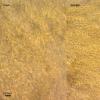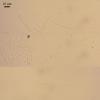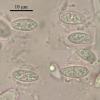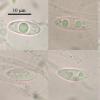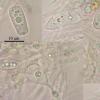
15-12-2025 07:09
 Danny Newman
Danny Newman
indet. Rutstroemiaceae sp. on unk. fallen leavesMc

15-12-2025 21:11
 Hardware Tony
Hardware Tony
Small clavate hairs, negative croziers and IKI bb

15-12-2025 15:54
 Johan Boonefaes
Johan Boonefaes
Unknown anamorph found on the ground in coastal sa

15-12-2025 15:48
 Danny Newman
Danny Newman
Melanospora cf. lagenaria on old, rotting, fallen

15-12-2025 07:05
 Danny Newman
Danny Newman
Pseudosclerococcum golindoi (det: Zotto)near Cosb

15-12-2025 11:49
 Danny Newman
Danny Newman
ITS sequences from the following two collections B

15-12-2025 12:34
 Danny Newman
Danny Newman
indet. Rhytismataceae on oak leafnear Purchase Roa

09-12-2025 12:06
 Andgelo Mombert
Andgelo Mombert
Bonjour,Je recherche l'article concernant Hypobryo
I do not see clear clamps there (i would say clampless), spores with gelatinous sheath (but not always), and there are abundant budding at maturing.
Collected on pine wood (Pinus sylvestris) in bog, N61,066591° E69,457326°, 07.09.2012.
Apothecia turbinate, with short stipe, hymenium surface convex, growing in clusters (2-4), 2,5-3,5 mm in diam, hymenium surface bright yellow, smooth, outer surface yellowish, pale, brownish at stipe base.
Outer layer of excipulum from textura globosa (at base) to porrecta (edge), from thick-walled cells; asci cylindrical, long, with amyloid pore, about 167 x 9; spores very variable in shape, disarticulating in two parts, and budding when overmature, with gelatinous sheath (not in all spores), with several medium guttules and amorphous oil content, 1-2 septated when overmature, mean shape fusoid, with obtuse ends, measurement for 10 mean spores: 14,2 x 5,3; conidia at long stalks, 5 x 3; paraphyses cylindrical, not enlarged to the tip, rarely branched, many segmented (about 5-7 septa), without or with some minor guttules in upper part (but bad seen in rehydrated stuff), about 150 x 2,3.

There the spores were in water, and in KOH (in different pictures), the same "approximate <10" concentration.? The specimen was stored dry before.


